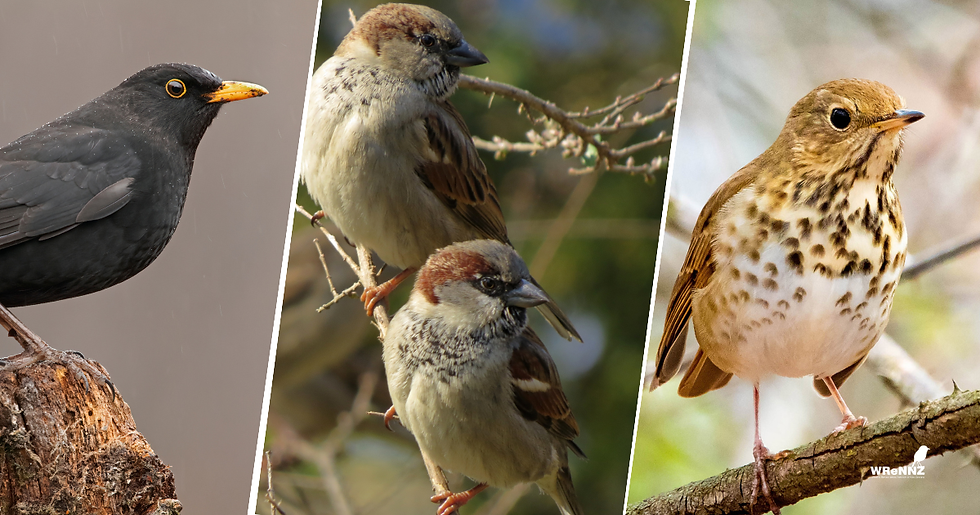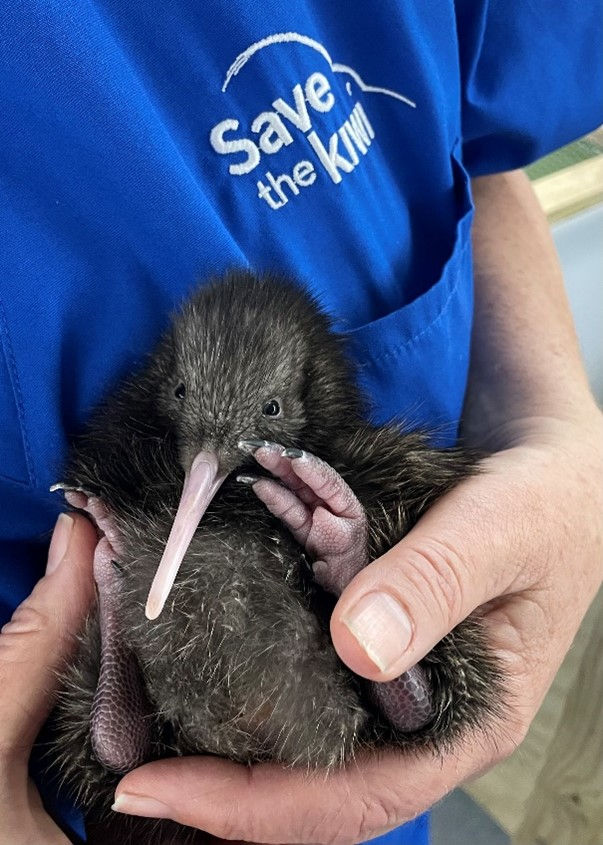
Not quite Goldilocks and the Three Bears, but almost.
Rearing kiwi chicks in a creche is trialling, at times exhausting, and sometimes you get to the stage when you just want to chuck the towel in because you are not winning in some areas of your workplace.
Over the last 3 years at the Napier Kiwi Creche, not only have we increased our numbers of kiwi chicks in the wild, but we have also increased the numbers of diurnal birds at our facility.
Sparrows, blackbirds, and thrushes have all figured out that this is a pretty cool place to live. Food is put out at 4:30pm each day, and they have all figured out how to get through a two-tiered feeding system, which includes pushing through two sets of butynol flaps.
It has become a learned behaviour amongst the wild flock. The parent birds are seen to bring their young down to sit outside the Kiwi food boxes, while the adult birds pop in and out with ease (once they have pushed open the flaps) and successfully feed baby birds and themselves quickly and efficiently.
Of course, they also have access to fresh, clean drinking and bathing water.
All this creates more diurnal bird poo in the facility and dirty roosting areas.
We normally start offering approx. 60g daily to a 3-week-old chick to get them started. They are weighed weekly, and if they don’t hit the desired weight, we offer more. Often, we would be offering 120-130g to a 5-week-old chick, which is not right; it doesn’t add up. Why? Because the diurnal birds are taking a huge portion of it, and in some cases, over a third or more of the food was being lost to diurnal birds.
We tried camouflaging the food boxes with tree material, but it just created a roosting place for the birds.
We thought about having a staff member come in and feed out at nightfall. Well, in all honesty, who wants to do that during daylight saving? 9pm feed out, I don’t think so.
We had rocks strategically placed along the railings of the runs, and we threw rocks at the birds; yep, we were totally desperate at this stage.
We rung vets to see if we could catch and gas them!!!! I thought, “Now we are really going into a headspace we don’t want to be in, mass killers.”
What to do? What did we try? What was the winner?
A lightbulb moment……. Pete Shaw from the Forest Life Restoration Trust came to pick up some kiwi for release. He copped it!!!!! Two hysterical women at the end of their tether.
“Why don’t you try automatic pet feeders on a timer?”

We tried one, and it failed, only because they were too hard to clean, and 32 bowls each day to clean with small compartments where food got trapped was hopeless.
But we felt we were onto something.
“Chicken Coop doors. On a timer. Surely, it would work.
Google Search and BINGO - JACKPOT!
We ordered 32 doors; they arrived in a matter of weeks.
Unpacked and installed in a day. Good ole Temu.

The chicken coop door worked perfectly; it proved to be safe after trialling it and watching endless footage of the chicks interacting with it. They couldn’t get their bills stuck in anything. They no longer had to go through tunnel and butynol flap systems. The “diner” door literally opened at dusk, and they walked straight in, and at dawn, the door shuts, keeping out unwanted diners.
Another win for us is that the door entry was almost exactly the same as the entry on the box, so they just screwed on.

The leftover food was overwhelming.
Chicks at a kilo (approx. 3.5 m old), we would normally be feeding out about 170g to give everyone a chance at the bowl of food.
Now, the max we would be feeding out to a bird of this age and weight is about 120g.
So, we are saving money, less time spent in the kitchen making food, and next to zero waste.
Our Kiwi chick handlers now know exactly how much chicks like this are consuming each night and can adjust nightly allocations. The chicken coop feeders have taken all the guesswork out of it.

Article written by
Bev Wilkinson - WReNNZ member and Save the Kiwi Manager of the Napier Kiwi Creche


Comments